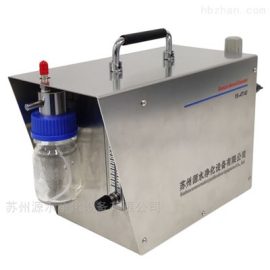
# Aerosol Generator: A Comprehensive Review of Design, Applications, and Performance
Aerosol Generator: A Comprehensive Review of Design, Applications, and Performance
Aerosol generators are essential devices in various scientific, industrial, and medical fields. They are designed to produce fine particles or droplets suspended in a gas, commonly referred to as aerosols. This article provides a comprehensive review of aerosol generator designs, their applications, and performance metrics.
Design of Aerosol Generators
The design of an aerosol generator is critical to its performance and suitability for specific applications. Common types of aerosol generators include:
- Nebulizers: These devices use ultrasonic vibrations or compressed air to break liquid solutions into fine droplets.
- Electrospray Generators: These utilize electric fields to produce highly charged droplets, often used in nanotechnology and pharmaceutical research.
- Condensation Generators: These generate aerosols by cooling a vapor until it condenses into fine particles.
- Atomizers: These rely on mechanical forces to disperse liquids into aerosols, commonly used in spray painting and fuel injection systems.
Each design has unique advantages and limitations, making it suitable for specific use cases. For instance, nebulizers are widely used in medical inhalers due to their ability to produce consistent droplet sizes, while electrospray generators are preferred for precision applications in material science.
Applications of Aerosol Generators
Aerosol generators have a wide range of applications across multiple industries:
- Medical and Pharmaceutical: Aerosol generators are used in drug delivery systems, such as inhalers for asthma and COPD treatments. They also play a role in vaccine development and respiratory therapy.
- Environmental Science: These devices are used to simulate atmospheric conditions, study air pollution, and test air filtration systems.
- Industrial: Aerosol generators are employed in coating processes, such as spray painting and thin-film deposition, as well as in the production of nanomaterials.
- Research and Development: They are essential tools in laboratories for studying aerosol behavior, particle dynamics, and material properties.
The versatility of aerosol generators makes them indispensable in both research and practical applications.
Performance Metrics
Evaluating the performance of an aerosol generator involves several key metrics:
- Particle Size Distribution: The range and consistency of particle sizes produced by the generator.
- Output Stability: The ability of the generator to maintain consistent aerosol output over time.
- Efficiency: The ratio of input energy or material to the amount of aerosol produced.
- Scalability: The generator’s ability to produce aerosols at different scales, from laboratory to industrial levels.
These metrics are crucial for selecting the right aerosol generator for a specific application and ensuring optimal performance.
Conclusion
Aerosol generators are versatile tools with diverse applications in science, medicine, and industry. Understanding their design principles, applications, and performance metrics is essential for leveraging their full potential. As technology advances, we can expect further innovations in aerosol generator designs, leading to improved efficiency and broader applications.
Keyword: Aerosol Generator
